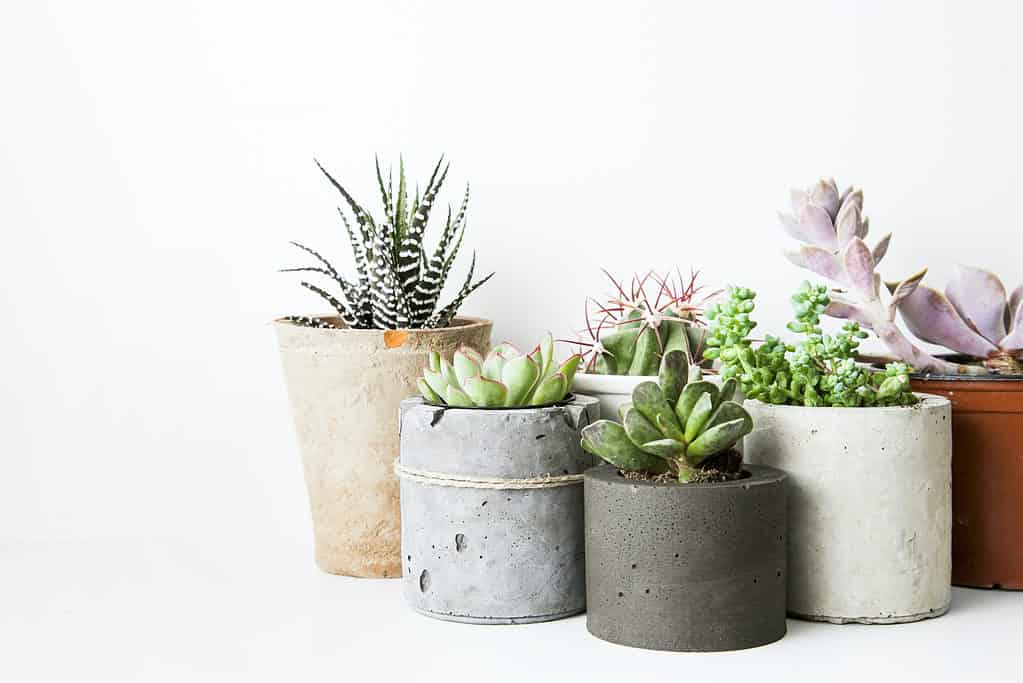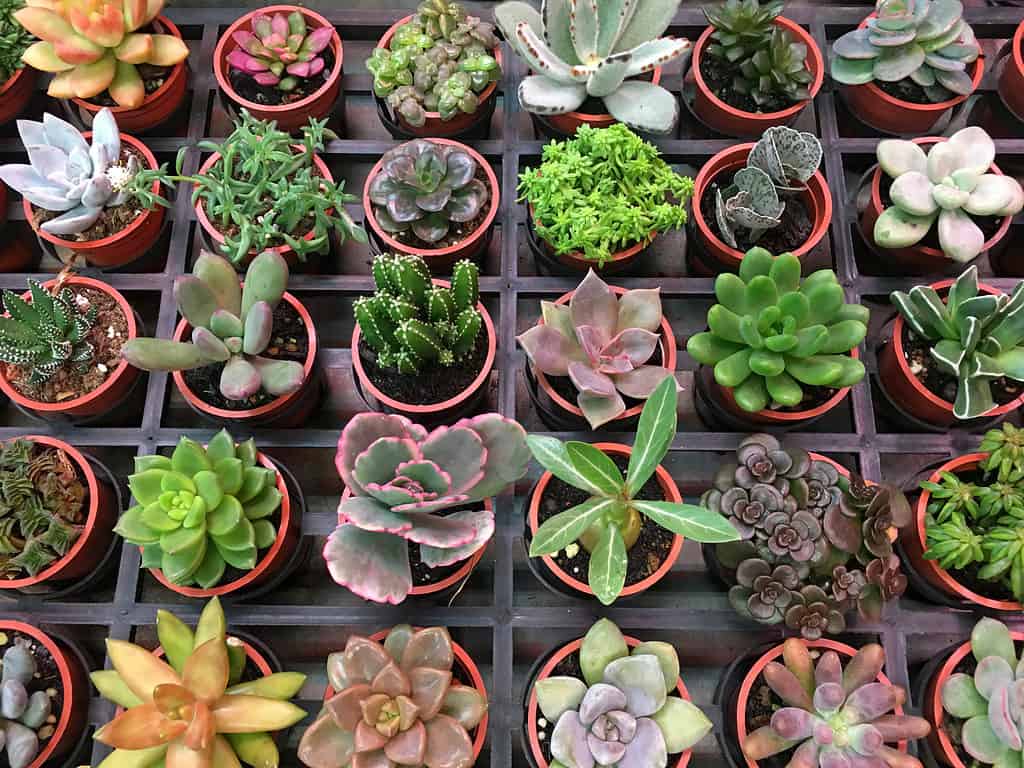The world of succulents is a vast and diverse one, with thousands of species in all shapes, sizes, and colors. But regardless of which succulent you have, some basic care tips will help it thrive.
Succulents are easy to care for — all you have to do is keep them watered and fertilized, which is pretty manageable once you get into a routine. Even if your schedule is hectic, succulents are so forgiving that they’ll still look great when you’re too busy to give them the attention they deserve!
However, they can be finicky about water and sunlight. But when you do meet them, you’ll get rewarded with an explosion of color and texture that will make your space look like something out of a magazine.
Learn how to care for most succulents in this guide, and watch your plant flourish!
1. Location
The first thing to decide is whether you want an indoor or outdoor succulent. While succulents are versatile plants, they don’t do well in cold weather and require light. In addition, they don’t like high-humidity areas and too much rain. So, if you live in an area with these conditions, consider having a succulent houseplant instead of an outdoor plant.
Growing succulents indoors is fairly easy. They make great desktop décor and are the perfect plant for newbies looking to dip their toes in growing houseplants. But where do you put succulents? Well, pretty much anywhere. They will look great on your desk, next to your couch, or on a window ledge. However, consider the pets in your home, as succulents are toxic to cats and dogs.
2. Containers
Succulents need well-draining soil, and it is possible to over-water them. Beginners should consider terracotta pots because they have a drainage hole on the bottom that allows excess water to escape.
There are two common root systems for succulents, taproots, and hair roots, so the container size is essential. Taproots grow deeper into the soil to reach moisture. In addition, you will want to research the succulent’s lifespan. Therefore, if it is a long-living succulent with a taproot system, it will require a larger container to grow in, or you can replant them as it grows.

Succulents (pictured) are great beginner plants because they are resilient and low maintenance.
©Julia Karo/Shutterstock.com
3. Water
Here’s the tricky part. You can over-water your succulent. So when watering the plant, stop as soon as you see water dripping from the drainage hole on the bottom and let it keep dripping until all excess water has drained from the pot.
Keep in mind that succulents don’t need to get watered often. They tolerate drought conditions, but you should water them every 1-2 weeks. Water enough to soak the top inch of soil. They don’t need more than that.
4. Soil
Succulents thrive in well-draining soil with chunks of bark that contain organic matter, such as peat moss, and you can keep the soil light by adding inorganic matter. Perlite is a great inorganic material that allows for aeration through the soil. Head to the store and get a cactus mix as they allow air to circulate correctly, but be sure to read the ingredients before making a purchase.
5. Light
How much light do succulents need? They prefer 4-6 hours of sunlight per day. However, if you have placed them on a window sill, turn the plant to let the other side get some sun. Pay attention to how the succulent is doing. Its leaves can change white or brown from overexposure to light.
Then, there is under-exposure to sunlight. The leaves will grow further apart and elongate. Some will grow to the side as the plant searches for sunlight. If your succulent does stretch, there is no way to reverse it, but you can prevent further growth problems by moving it to a spot with more light and pruning it to a better shape.
6. Cleaning Succulents
Succulents are some of the easiest plants to grow. However, they do require a bit of upkeep once in a while. If you have a succulent potted plant, chances are you’ve noticed that it can get pretty dusty or dirty over time. You probably also know that if you’re not careful, you can accidentally damage the roots as you try to clean them.
Cleaning your potted succulent plants is a breeze! Here’s how:
- Remove any dead leaves or flowers from your plant, and clip off any dead stems that have become brown or mushy.
- Use a soft brush (like a paintbrush) to gently sweep away any dust or dirt accumulated on your plant’s surface.
- Gently wash away any remaining soil using a watering can with a fine rose head nozzle or gently pour water over the top of the soil until it has all absorbed. If there is still dirt left, repeat steps 2 and 3 until all dirt traces have gotten removed from your plant’s surface.

Clean your potted succulents (pictured) by removing dead leaves and dust that accumulate on the plant.
©skywing/Shutterstock.com
7. Pests
The best way to keep your succulent plants pest-free is to ensure they’re healthy. A healthy succulent will be able to fight off pests and diseases, and it will also be able to recover from any damage that does happen.
The most common problem gardeners have with succulents is aphids. These little bugs can suck the sap from the leaves of a plant and cause it to turn brown or yellow. The best way to prevent this is to keep the soil moist but not too wet around your succulent. If you have trouble with pests, try using an organic insecticide made for use on houseplants and vegetables. It will kill both aphids and insects feeding on your succulent leaves.
Final Thoughts
There’s nothing like watching a plant grow and adapt over time as its colors change seasonally or even throughout the day as light shines on it differently. Succulents are super versatile, meaning they will probably thrive no matter where you live or what kind of space you have.
Succulents are hardy and resilient, so you can trust them to care for themselves. They’re perfect for people who don’t have much time or patience or for those who just want something that will look nice in their office without any work!
The photo featured at the top of this post is © asharkyu/Shutterstock.com
Sources
FAQs (Frequently Asked Questions)
How do you water succulents?
You should water succulents every 2 weeks and once a month when temperatures drop below 40 degrees Fahrenheit. Only add enough water to moisten an inch of the topsoil. Use a pot with a drainage hole and well-draining soil to keep the succulent roots from drowning.
How do you know when a succulent needs water?
You will know your succulent is going through a dry spell when the soil is very dry and the succulent’s leaves begin to wrinkle.
Do succulents need sun or shade?
Succulents do well when exposed to 4-6 hours of sunlight daily.
Thank you for reading! Have some feedback for us? Contact the AZ Animals editorial team.







